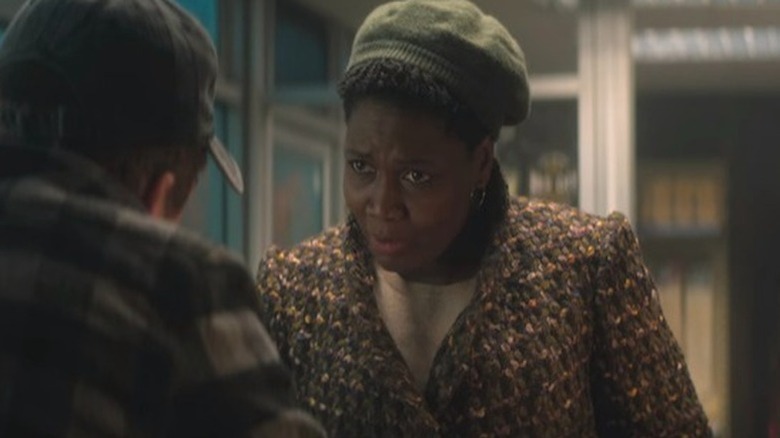Neil Gaiman Explained This Major Change The Sandman Series Made To Doctor Destiny's Story
When you adapt a visually distinct and wild comic into a live-action show, there are always some chances that need to be made for the sake of minor things like believability and basic laws of physics. A significant part of Netflix's "The Sandman" happens in dreams and involves supernatural characters, so the show gets to play a little bit faster and looser than others. Still, because the comic book version is extremely stylized and features a whole bunch of DC characters that can't really be used here, certain changes have been made.
Take John Dee, for instance. The lie-hating, dreamless magician wields a modified version of Dream's (Tom Sturridge) Ruby, and his focus episode, "24/7," ranks among the show's creepiest. The original John Dee character in the comics is a particularly grim and twisted version of Doctor Destiny, who escapes from Arkham Asylum as a gruesome physical and mental wreck. The Netflix version is a rather more human-looking John Dee whose subtle creepiness is expertly portrayed by David Thewlis — but even before he walks in the doomed diner, the show makes a significant change in his story. Neil Gaiman has a big vision for "The Sandman" series, but he also pays plenty of attention to detail ... and he's now explained precisely why Dee's big moment in "A Hope in Hell" went very differently from the comics.
Gaiman made John Dee spare Rosemary to keep the fans on their toes
Apart from John Dee's looks and status as a DC supervillain, there's one significant difference between the comic book version and the show one. In the comics, Dee gets a ride from a friendly driver called Rosemary who, thanks to Dee's penchant for always telling the truth, soon finds out what a dangerous person she's riding with. Regardless, she ends up helping Dee ... only for the villain to ruthlessly shoot her after they're at the destination. The Netflix version of Rosemary ("Ted Lasso" star Sarah Niles), on the other hand, survives the encounter. In fact, she does quite a lot more than that. Dee actually gives her the powerful Amulet of Protection, which means Rosemary is now safe from virtually any harm, and will get to enjoy an extraordinarily long life.
So, what prompted Dee to do this casual, yet highly valuable act of goodness instead of ending Rosemary's life like in the comics? When one fan asked this on Neil Gaiman's Tumblr, the "Sandman" creator revealed that the answer is quite simple: He wanted to send a message. "I wanted the people who knew the comics really well to realize that perhaps they didn't always know what would happen next," Gaiman wrote.
Netflix's "The Sandman" doesn't hesitate to adapt the unadaptable, and isn't afraid to divert from the source material when the situation calls for it. It's interesting to find out that Gaiman took the time to include a deliberate warning that fans should always stay on their toes ... especially when he managed to do it in a way that created a nice ending for a likeable character.

